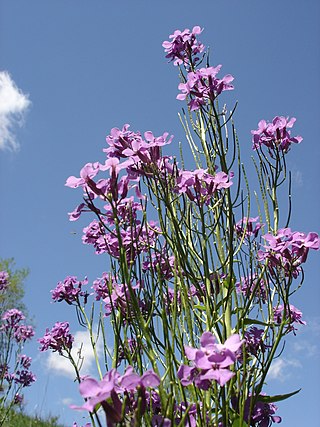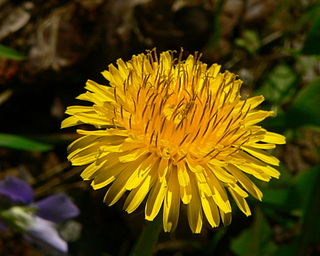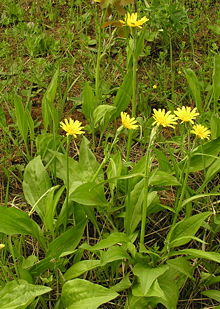
Nepeta is a genus of flowering plants in the family Lamiaceae. The genus name, from Latin nepeta (“catnip”), is reportedly in reference to Nepete, an ancient Etruscan city. There are 295 accepted species.

Onobrychis, the sainfoins, are a genus of Eurasian perennial herbaceous plants of the legume family (Fabaceae). About 206 species are presently accepted. The Flora Europaea lists 23 species of Onobrychis; the main centre of diversity extends from Central Asia to Iran, with 56 species – 27 of which are endemic – in the latter country alone. O. viciifolia is naturalized throughout many countries in Europe and North America grasslands on calcareous soils.

Hesperis is a genus of flowering plants in the family Brassicaceae. Most are native to Eurasia, with several endemic to Greece and Turkey. Many plants of this genus bear showy, fragrant flowers in shades of purple and white. One of the more widely known species is the common garden flower Hesperis matronalis. The genus name Hesperis was probably given because the scent of the flowers becomes more conspicuous towards evening.

Atractylis is a genus of plants in the family Asteraceae.

Anthemis is a genus of aromatic flowering plants in the family Asteraceae, closely related to Chamaemelum, and like that genus, known by the common name chamomile; some species are also called dog-fennel or mayweed. Anthemis are native to the Mediterranean region and southwest Asia east to Iran. A number of species have also become naturalized in the United Kingdom and other parts of the world.

Inula is a genus of about 80 species of flowering plants in the family Asteraceae, native to Europe, Asia and Africa.

Leontodon is a genus of plants in the tribe Cichorieae within the family Asteraceae, commonly known as hawkbits.

Jurinea is a genus of plants in the family Asteraceae.

Koelpinia is a genus of flowering plants in the family Asteraceae.

Pentanema is a genus of Asian and African plants in the tribe Inuleae within the family Asteraceae.

Scorzoneroides or hawkbits is a genus of plants of the tribe Cichorieae within the family Asteraceae.

Crepidinae is a subtribe of Cichorieae in the family Asteraceae.

Psephellus is a genus of flowering plants in the family Asteraceae, native to eastern Europe and western Asia. A taxonomic revision reassigned many species from Centaurea to Psephellus.

Eremogone is a genus of flowering plants in the family Caryophyllaceae, native to western North America, northern Asia, eastern Europe and northeastern Africa. Attempts to resolve taxonomic relationships within the Caryophyllaceae have resulted in the enlargement of Eremogone with species from other genera.















